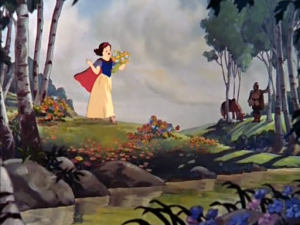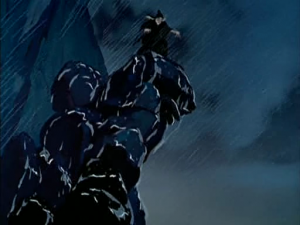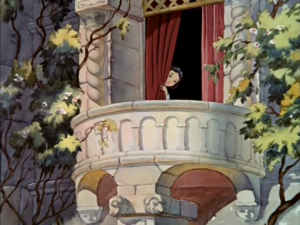This post is part of The Month of Animated Features. While the Golden Age overview highlights the role of Snow White in the history of animation, this post takes a look at Snow White in terms of how creatively valuable it is as a film viewed today.
Film Focus: Snow White and the Seven Dwarfs, 1937
Most film fans would tell you that Snow White and the Seven Dwarves, published in 1937, was the first American animated film, but they’d be wrong. Lotte Reiniger created a one-of-a-kind, silent, silhouette-animated film called The Adventures of Prince Achmed in 1926 after joining a group of experimental filmmakers.
But Snow White was the first hand-drawn animated film, and the first one to leave a major impact on the public, so I’ll start there.
To most film buffs and animation fiends, Snow White and the Seven Dwarfs is pretty much immune to criticism. Widely regarded as the either the greatest animated film of all time or the runner-up to Pinocchio, Snow White ranks among the biggest commercial, critical, and influential successes of all films, let alone animated films.
That’s why I’m disappointed to have to say this: In many ways, Snow White is not a very good movie by today’s standards. The characters are, for the most part, simplistic and predictable. The plot is threadbare. In short, Snow White has a very slight story. It’s little more than extended comic sequences and songs strung together. This style of storytelling is well-executed but is not as satisfying as the narrative-driven films popular the past few decades.
Snow White herself is aptly named: She’s so perfectly naïve and proper that it almost passes as a retroactive parody. They won’t be showing this classic at any feminist rallies in the near future: Snow White eagerly cooks dinner, cleans the house, and wants for nothing but a strong man to take care of her.
The most interesting character is the evil queen. There’s something poignant about the fact that she makes herself hideous just to become the most beautiful in the land. Overcome by envy of youth and beauty, she forgets that she is quite beautiful herself. Her obsession is with being the most beautful, best looking woman in the land. She’s willing to take away all of her beauty just to try and bring down Snow White, too. The movie doesn’t really explore this obsession, which is a shame. It’s the darkest and most fascinating element of the plot.
The dwarfs are, by design, rudimentary characters defined by one trait. The only two who really show any complexity are Doc, the hesitant leader to the group in spite of his nervous stutter, and Grumpy. I suppose its just the cynicism of modern American film that I’m used to, but Grumpy’s hesitancy to give his goodwill to Snow White seems perhaps more reasonable than the other dwarfs’ automatic devotion.
Aside from these characters, no one in the movie has any subtleties or growth. There’s really not enough plot for any character development beyond the fairy tale basics. The worst offender is the prince who doesn’t earn his significance in the plot. I’d be shocked if he’s actually on screen more than a minute total.
But like nearly any classic film from before the 1970’s, if you view Snow White with a different expectations from what you’d have going into a modern movie, you can actually get a lot out of it.
Simply, Snow White ranks among the most visually beautiful films of all time: You’d have trouble finding a frame of its 80-some minutes not worthy of a screenshot. Every scene, every effect, and every character is obviously-hand designed by pros. No efforts were spared by the animators to make this an impressive debut for Disney.
The strongest scene is late in the film, alternating between the dwarfs frantically rushing back to their house and the painfully quiet exchanges between the disguised queen and snow white. It has a palpable tension to it, no matter how many times I see it.
Any critical plot analysis should be taken with a grain of salt, too, since this is one of the original fairy tales set to cinema. One could argue that the story is stronger because of its simplicity and purity, in that it evokes nostalgia by adhering the heroine to such innocence and plainness.
Finally, the film’s importance cannot be overstated. It immediately made feature-length animation both viable and culturally important. It kicked off the so-called Golden Age for Disney features, a stretch that wouldn’t be rivaled for a half-century.
Regardless of its lean story and characterization, Snow White is a must-see for any movie fan, and a must-own for any animation fiend.










I have a question. By any chance would you know the value of this movie poster? I have one exactly like it.